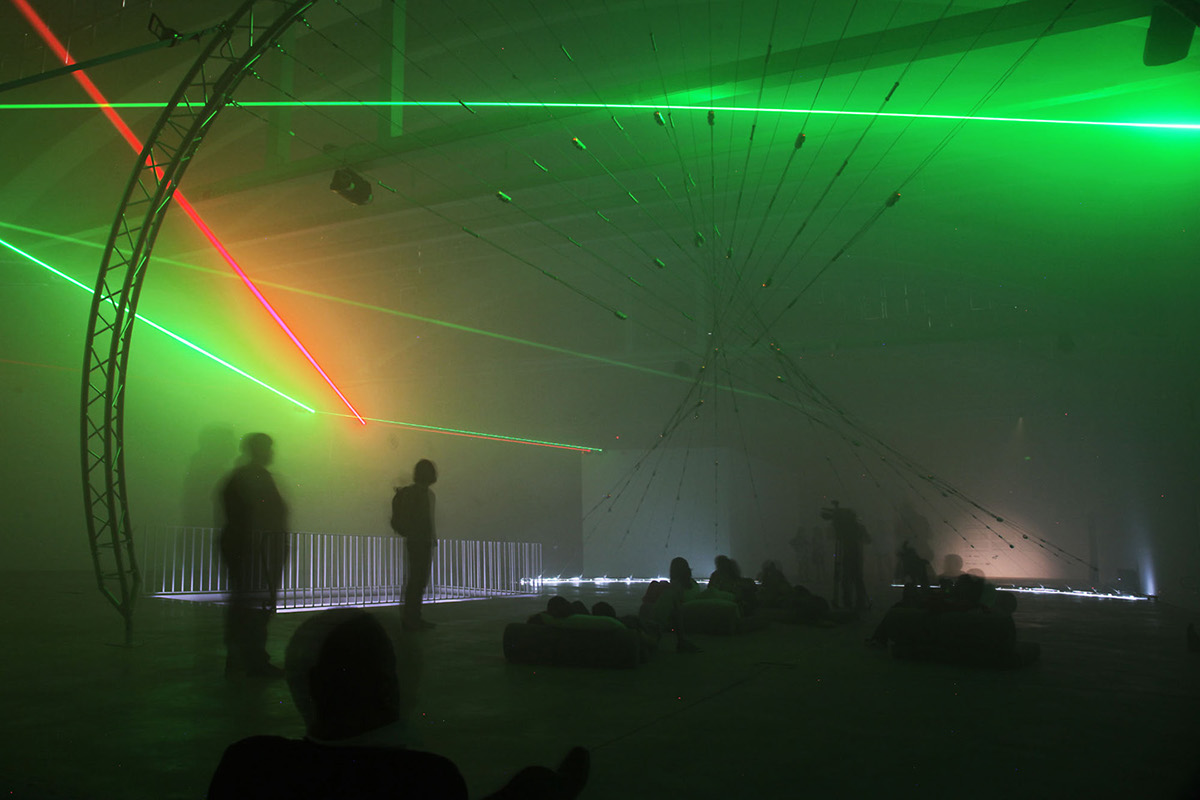
N-Polytope Contribution
Mirror Controlling Software
The goal of this part of the project was to create a GUI interface that would make it possible to program laser sequences. The key aspect is the ability to store, organize and read playlists, to control 6 lasers and 18 mirrors, to manage the communication network, and to monitor the system’s stability and provide accurate feedback in case of disruption. The program was created in C++ with the Openframeworks library and the ofxUI library by Reza. Here is a detail of each element of the Mirror Controlling Interface.
Database
For the database the program creates and maintains one xml file per playlist. Each playlist contains the position of each mirror (tilt and pan) and the state of the laser (pulse speed, voltage, fade in/out cycle). It was imperative that it was possible to create, edit and delete playlists.
GUI
The gui is where the bulk of the work was made. The goal was to create a user friendly interface but at the same time amalgamates all of the functionalities of the program within one screen size for a global overview. The design process consisted of several iterations and I finally settled on a subtle gray design with red highlights to demonstrate crucial information. The design was also based on the visual hierarchy of mixing table layouts. In order to have all of the functionalities that we required we had to heavily modify the ofxUI library.
Communication
I set up a serial communication between the program and the Arduino, who then relayed the data through an Xbee network to the end nodes. The program only sends data to the mirrors or lasers which the state needs to change. Once the end node has receive its data, it then proceeds to process it, then it would send back a checksum so that we could check if the mirrors or laser have been modified as to our instructions. If not, the message was sent again.
Arduino & Minibee & Xbee
Each end node needed to be able to control a servo motor and a laser while always listening for new inputs and if needed transmit information back to the program.
Testing
Once everything was finalized we tested the whole system in the hexagram room that we had rented, which is around 12 feet by 30 feet. Our results were satisfactory and the program was able to fluently be program,med play the playlist and perform consistently over more than one hour.
Virtual Representation of the location
That was an early task in the development process. Where I took the CAD plans of Laboral and created from them, a virtual accurate 3D model of the space. It helped us envision the space and helped shape the laser platforms.
Design and Creation of the Organic Sensor Housing
The mandate for this part of the project was to create a container to hold the sensors, and Xbee. The container is hung on a metal cable and constitutes an intricate part of the installation. It has to be both effective and visually pleasing. The sensor housing was first modeled in 3D with Rhino, taking into account all of the sensor dimensions and placements. Then, it was 3D printed in the hexagram facility at Concordia. Since we had to create a large quantity, careful analysis of the structure had to be made in order to have the right balance between structure and costs. I also had to oversee the printing and curing processes.
Design and Creation of the Mirror Housing
This part of the project was very similar in process to the creation of the Organic Sensor Housing. I designed a new and efficient way of attaching the mirrors to the servos motors and to fixed stands. There were three designs that were made to accommodate tree types of mirrors; small square mirror, large square mirror, and large round mirror. The materiality and design of the concept dictated that the mirror housings be printed in a specific material that was not available at the time through Concordia hexagram, so they were outsourced to Shapeways.
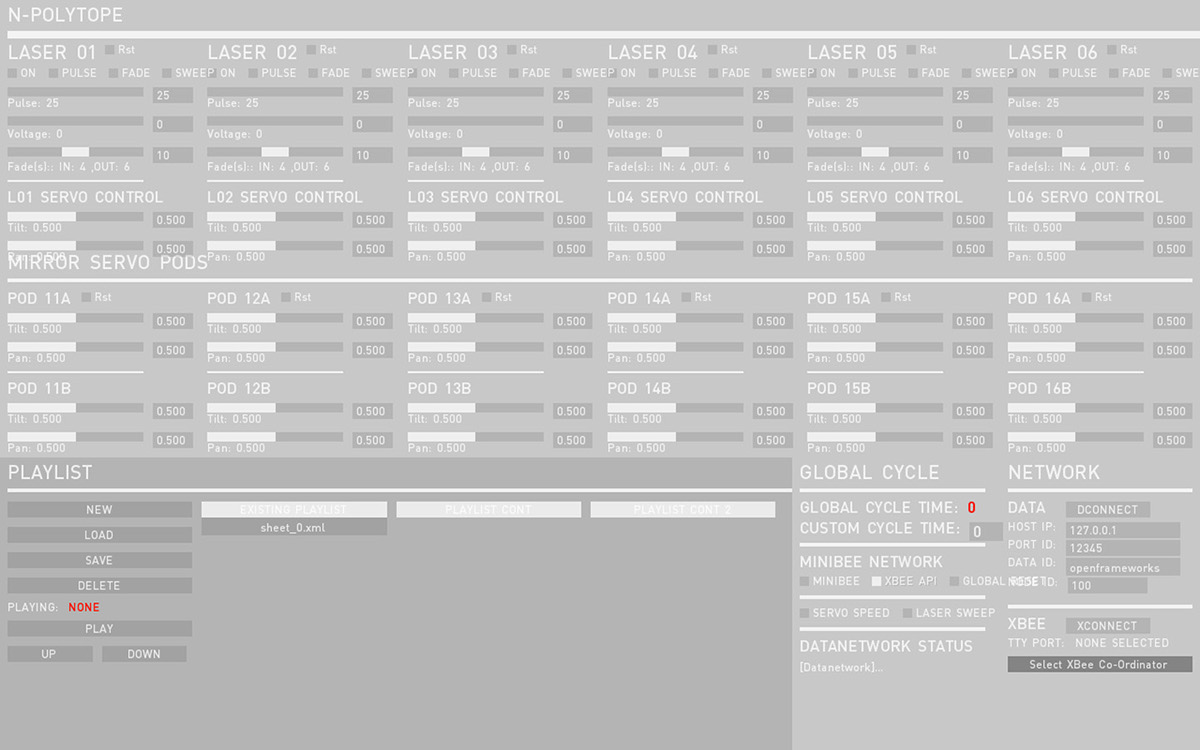
Designed UI
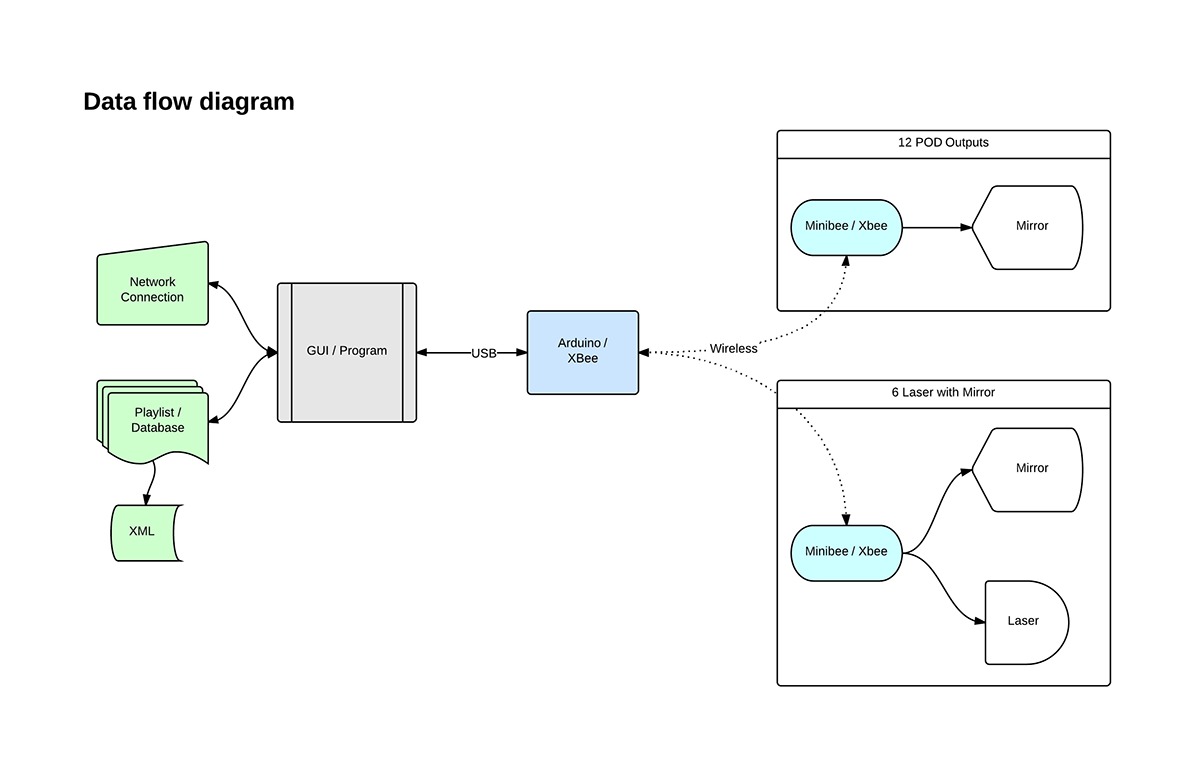
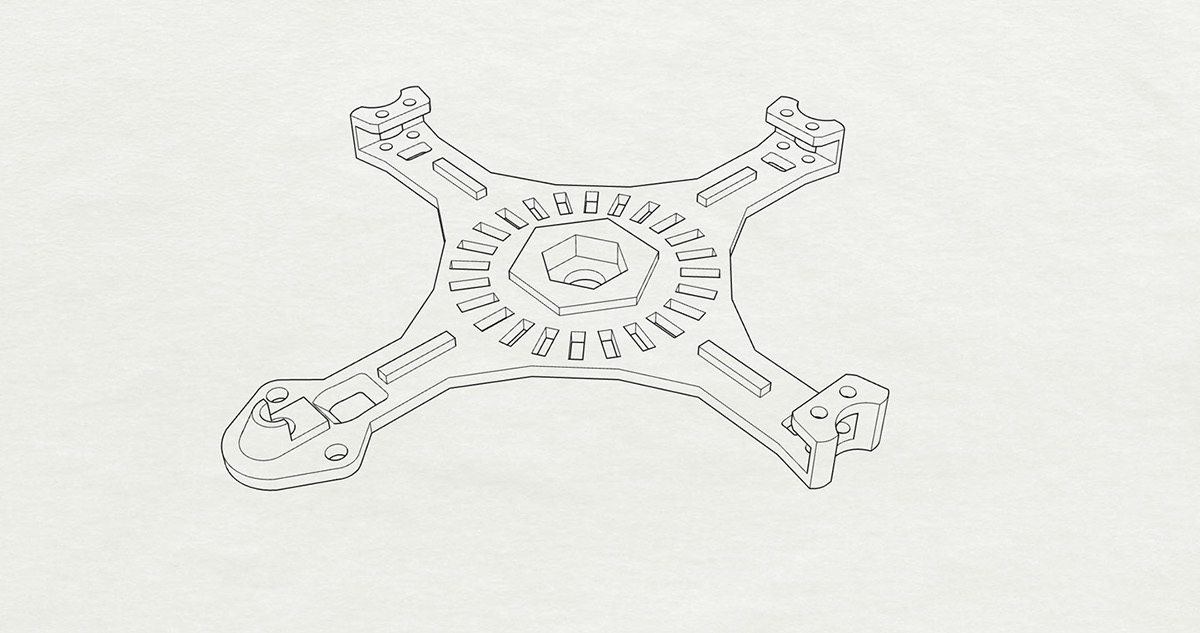
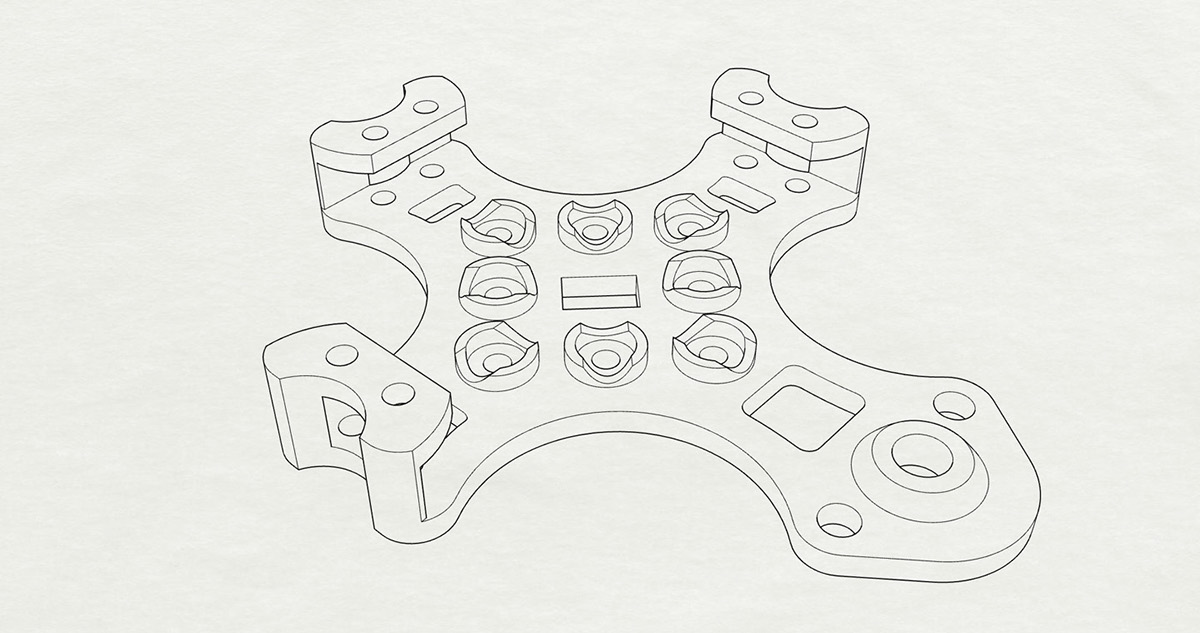
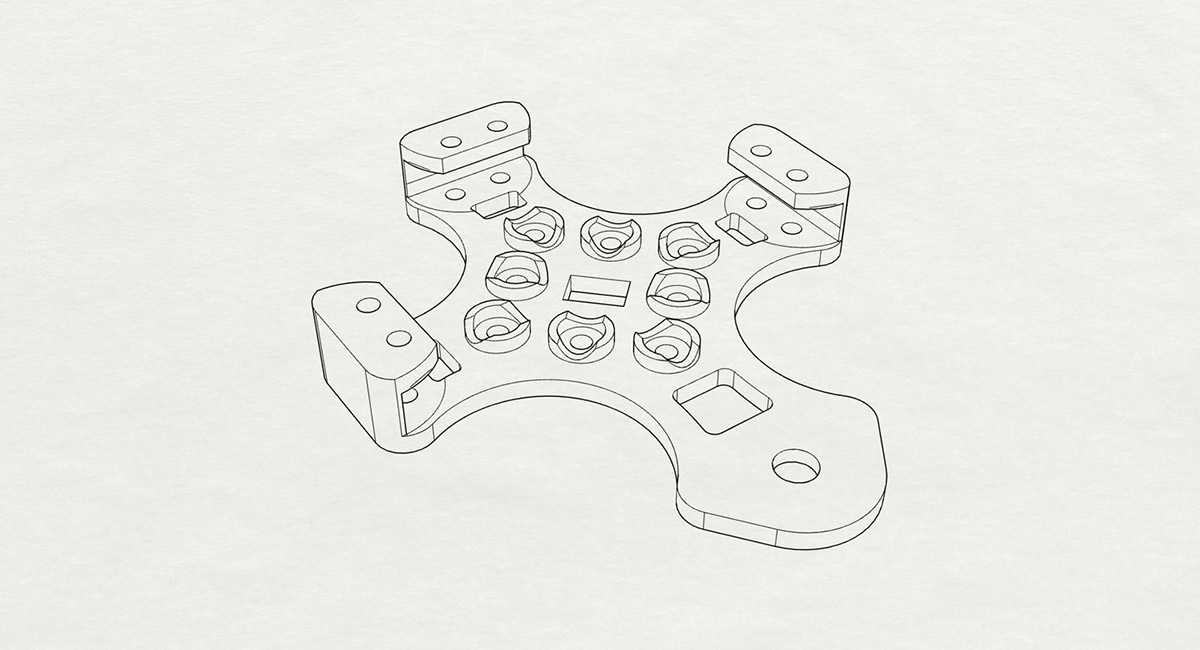
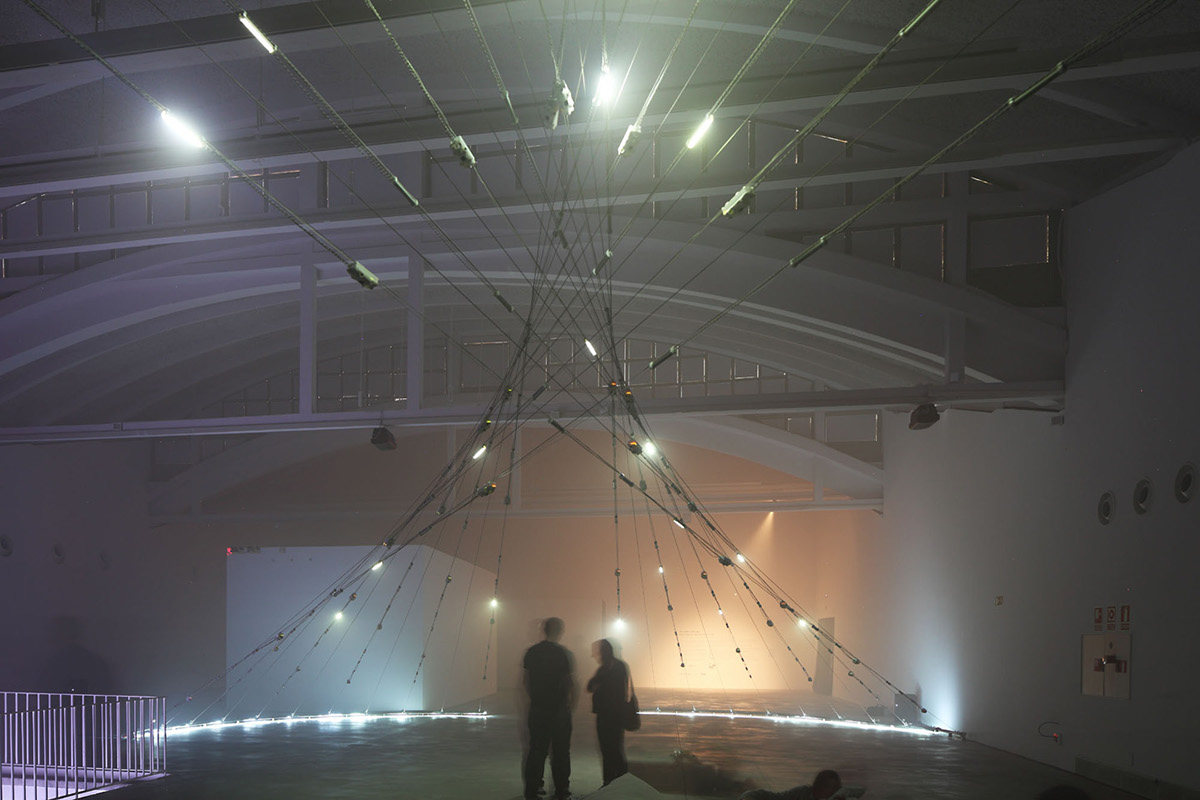
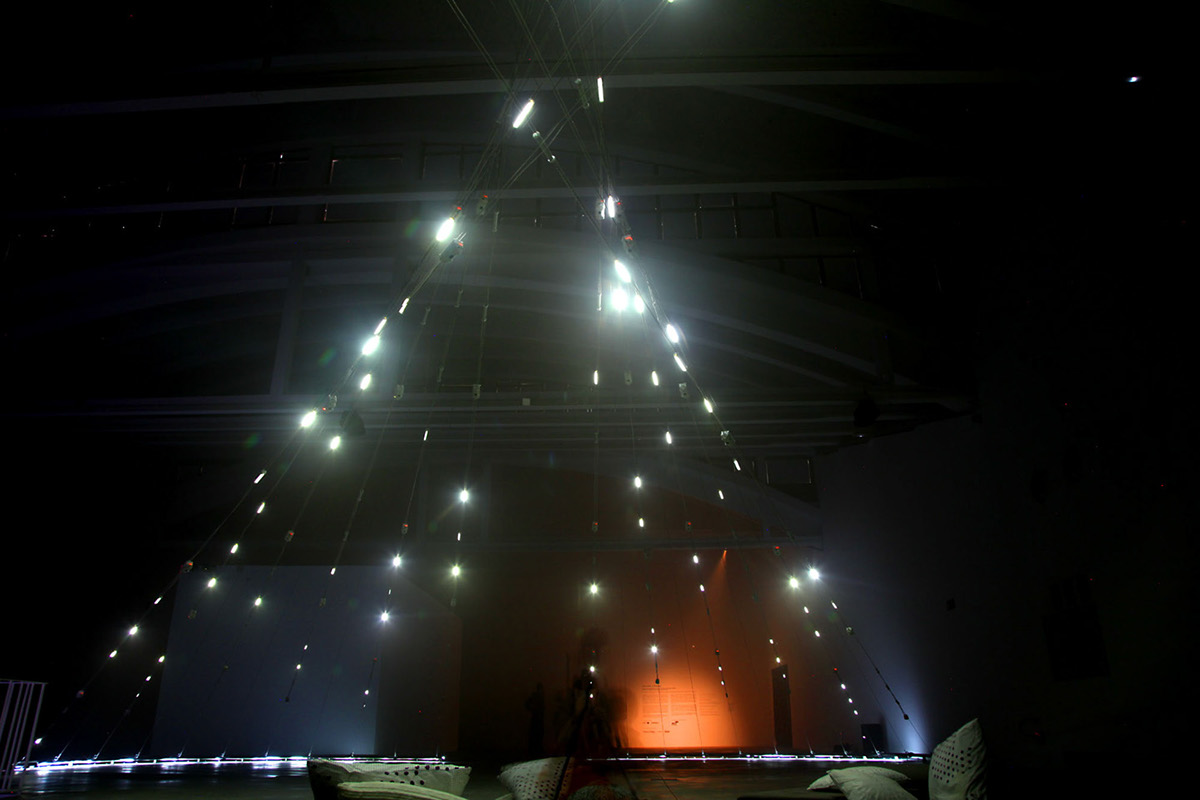
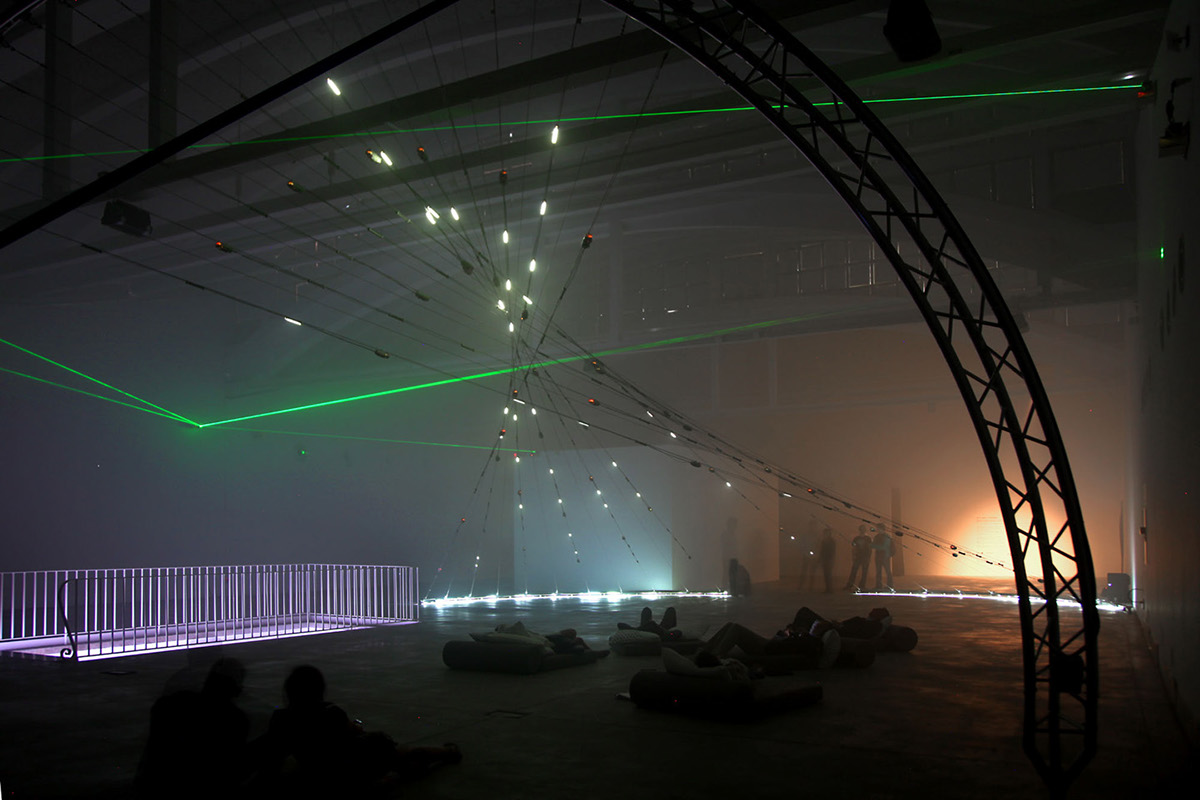
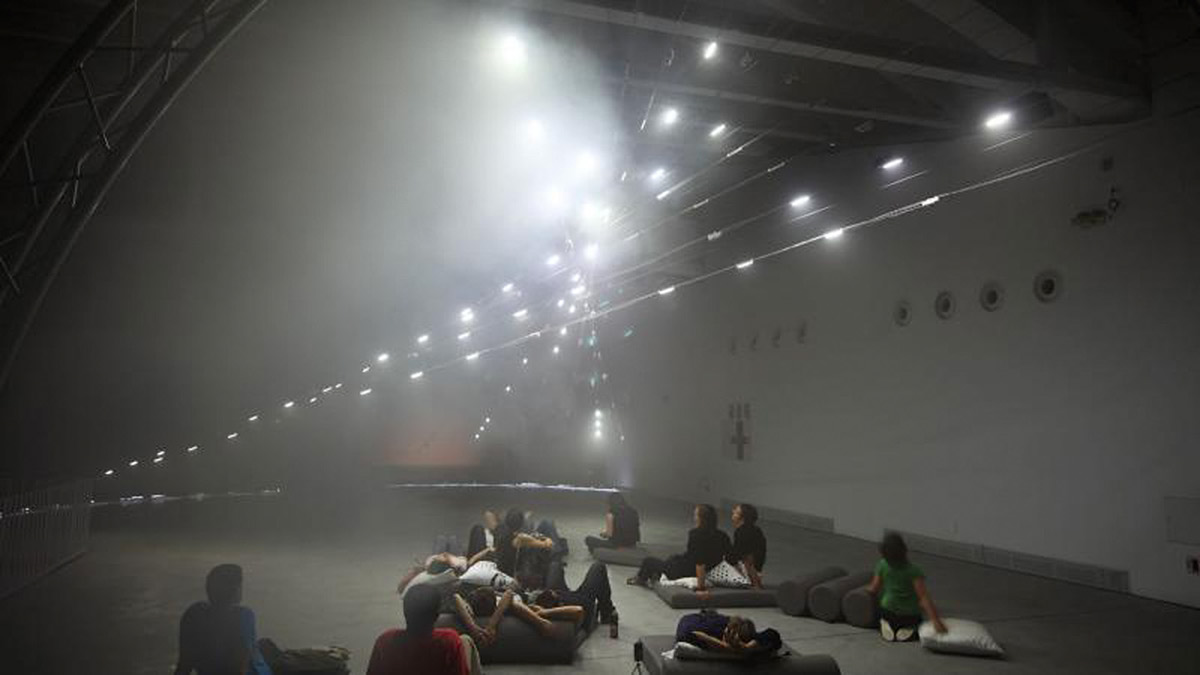
Project Description
N_Polytope: Behaviors in Light and Sound After Iannis Xenakis is a spectacular light and sound performance-installation combining cutting edge lighting, lasers, sound, sensing and machine learning software inspired by composer Iannis Xenakis’s radical 1960s- 1970s works named Polytopes (from the Greek ‘poly’, many and ‘topos’, space). As large scale, immersive architectural environments that made the indeterminate and chaotic patterns and behaviour of natural phenomena experiential through the temporal dynamics of light and the spatial dynamics of sound, the Polytopes still to this day are relatively unknown but were far ahead of their time. N_Polytope is based on the attempt to both re-imagine Xenakis’ work with probabilistic/stochastic systems with new techniques as well as to explore how these techniques can exemplify our own historical moment of extreme instability.
150, 10 Watt LED’s and 50 tiny speakers are suspended on 24, 20+ m stretched aircraft cables which form a ruled surface. While the behavior of the LED’s create a changing space of bursting points, coloured lasers that bounce off the surface of fixed and changing mirrors generate fleeting architectures of lines and shapes that flicker and disappear before the visitors’ eyes. Counter-pointing the visual scenography, multi-channel audio from the small speakers as well as the larger environment shifts between sparse natural and dense electronic textures. Across the architectural cable structure, the network of tiny speakers produce the behaviours of mass sonic structures made up of many small elements (sonic grains) creating swarms of tiny sounds that resemble a field of cicadas or masses of insects – akin to Xenakis’s interest in the stochastic movement of mass structures.
The re-imagining runs in both 15 minute performance and continuously evolving installation modes. The system is steered through a custom developed wireless sensor network utilizing machine learning techniques, specifically from the research area of reinforcement learning in which software learning agents interact with their environment in order to achieve a goal. The agent seeks to achieve its goal despite the fact that there is a high degree of uncertainty about the environment – in other words, the agent doesn’t know until it does something and is then “rewarded” in either a positive or negative manner. In N_Polytope, agents receive sensor-actuator information from the environment (the brightness of an LED and the frequency/amplitude of a sound) and can either turn the LED or the sound on or off, receiving a reward for it. However, the environment around the agent (and the sensor) is continually changing, which makes it challenging to determine what steps the agent will take and what such actions will result in. The agent’s actions thus influence not only the state of the environment in the present but also can affect the environment’s state in the future.
The overall course of N_Polytope is that of an event that is partially scripted and partially indeterminate thus enabling the performance to continually move between order and disorder, tranquility and thundering chaos. The audience “feels” these algorithms as two forms of “life” – the behaviors in light and sound and the “life” of experiencing such a system evolving in the present.
N_Polytope was awarded an honorable mention in the 14th VIDA Art and Artificial Life Award from Fundacion Telefonica.
http://www.fundacion.telefonica.com/es/que_hacemos/conocimiento/concursos/certamen_vida/vida14/N-Polytope.htm
Locations
LABoral Centro de Arte y Creación Industrial
Gijón, Spain
Premiere, July 20, 2012
Gijón, Spain
Premiere, July 20, 2012
Materials
Custom designed architectural structure of steel and aluminum
LED's and custom electronics
Lasers and custom electronics
Custom designed control software
Photoelectric sensors
wireless Xbee modules and custom wireless sensor network software (http://sensestage.eu)
LED's and custom electronics
Lasers and custom electronics
Custom designed control software
Photoelectric sensors
wireless Xbee modules and custom wireless sensor network software (http://sensestage.eu)
Collaborators
Concept and Direction: Chris Salter
Composition: Chris Salter and Adam Basanta
Architectural Design: Thomas Spier
Lighting and Laser System Design: Elio Bidinost
Embedded Systems, Micro Light and Sound Design, Media Composition Programming: Marije Baalman
Media Behavior Modeling and Programming: Sofia Audry
Structural Consultant: Schlaich Bergermann and partner/David Sommer
Electronics Assembly: Rene Wassenburg (Schrikdraad Ontwerp) and Stan Verberkt
Openframeworks Laser Mirror Control Software: Samuel Tissot-Jobin
Composition: Chris Salter and Adam Basanta
Architectural Design: Thomas Spier
Lighting and Laser System Design: Elio Bidinost
Embedded Systems, Micro Light and Sound Design, Media Composition Programming: Marije Baalman
Media Behavior Modeling and Programming: Sofia Audry
Structural Consultant: Schlaich Bergermann and partner/David Sommer
Electronics Assembly: Rene Wassenburg (Schrikdraad Ontwerp) and Stan Verberkt
Openframeworks Laser Mirror Control Software: Samuel Tissot-Jobin
Press
http://we-make-money-not-art.com/archives/2012/07/npolytope.php
http://lacomunidad.elpais.com/avferreiro/2012/7/20/n-polytope
http://es.globedia.com/christopher-salter-fantasias-iannis-xenakis
http://www.artdaily.com/index.asp?int_sec=2&int_new=56619#.UA5TNo7BeMU
http://ocio.lne.es/agenda/noticias/nws-99190-salter-reinterpreta-laboral-centro-arte-arquitecturas-xenakis.html
http://www.lne.es/sociedad-cultura/2012/07/21/arquitectura-sentidos/1273691.html
http://collabcubed.com/2012/08/21/chris-salter-n-polytope/
http://turbulence.org/networked_music_review/2012/08/28/net_music_weekly-n-polytope-behaviors-in-light-and-sound-after-iannis-xenakis/
http://www.bonart.cat/actual/christopher-salter-presenta-a-laboral-n-polytope-after-xenakis/
http://hemeroteca.abc.es/nav/Navigate.exe/hemeroteca/madrid/cultural/2012/07/28/029.html
http://www.elcomercio.es/videos/asturias/noticias-de-asturias/1744385361001-chris-salter-inaugura-npolytope-laboral.html
http://www.elcomercio.es/v/20120718/cultura/naturaleza-representada-imagen-sonido-20120718.html
http://www.elcomercio.es/v/20120720/cultura/laboral-evoca-sonido-20120720.html
http://www.elcomercio.es/videos/asturias/noticias-de-asturias/1744385361001-chris-salter-inaugura-npolytope-laboral.html
http://www.hoyesarte.com/mas-noticias/fin-de-semana/11816-estallido-de-luz-y-de-sonido-en-laboral.html
http://hoyesarte.com/component/customproperties/show/show.html?cp_localizacion=asturias&cp_tipo=&cp_estado%5B0%5D=encartel&cp_estado%5B1%5D=proximas&submit_search=Buscar
http://lacomunidad.elpais.com/avferreiro/2012/7/20/n-polytope
http://es.globedia.com/christopher-salter-fantasias-iannis-xenakis
http://www.artdaily.com/index.asp?int_sec=2&int_new=56619#.UA5TNo7BeMU
http://ocio.lne.es/agenda/noticias/nws-99190-salter-reinterpreta-laboral-centro-arte-arquitecturas-xenakis.html
http://www.lne.es/sociedad-cultura/2012/07/21/arquitectura-sentidos/1273691.html
http://collabcubed.com/2012/08/21/chris-salter-n-polytope/
http://turbulence.org/networked_music_review/2012/08/28/net_music_weekly-n-polytope-behaviors-in-light-and-sound-after-iannis-xenakis/
http://www.bonart.cat/actual/christopher-salter-presenta-a-laboral-n-polytope-after-xenakis/
http://hemeroteca.abc.es/nav/Navigate.exe/hemeroteca/madrid/cultural/2012/07/28/029.html
http://www.elcomercio.es/videos/asturias/noticias-de-asturias/1744385361001-chris-salter-inaugura-npolytope-laboral.html
http://www.elcomercio.es/v/20120718/cultura/naturaleza-representada-imagen-sonido-20120718.html
http://www.elcomercio.es/v/20120720/cultura/laboral-evoca-sonido-20120720.html
http://www.elcomercio.es/videos/asturias/noticias-de-asturias/1744385361001-chris-salter-inaugura-npolytope-laboral.html
http://www.hoyesarte.com/mas-noticias/fin-de-semana/11816-estallido-de-luz-y-de-sonido-en-laboral.html
http://hoyesarte.com/component/customproperties/show/show.html?cp_localizacion=asturias&cp_tipo=&cp_estado%5B0%5D=encartel&cp_estado%5B1%5D=proximas&submit_search=Buscar


